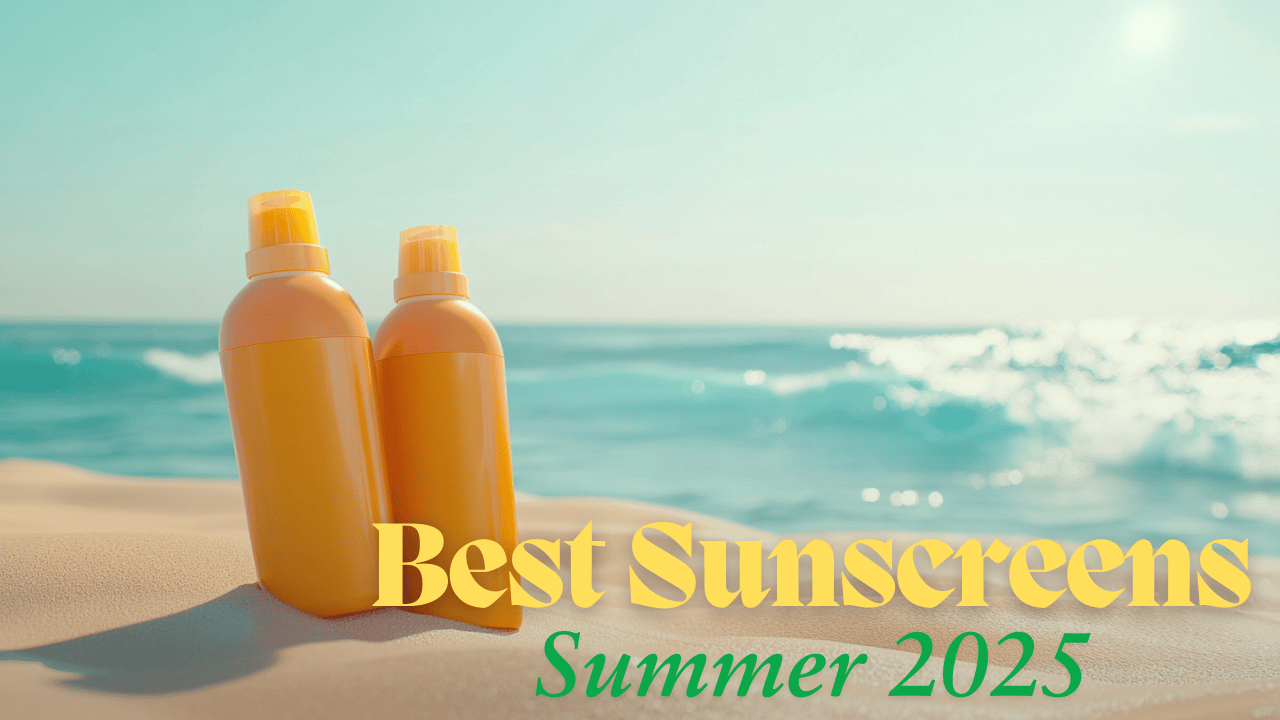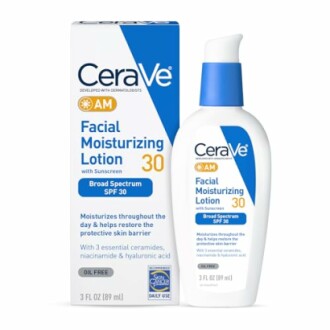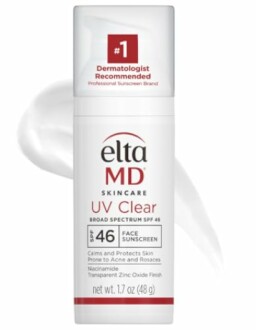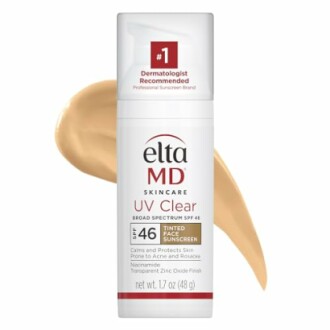
Best Sunscreens for Summer 2025: Expert Reviews and Performance Insights
Key Takeaways
- New UV Filters: The FDA may soon approve bemotrizinol for broader UVA/UVB protection.
- Top Picks: Editor-tested sunscreens like Murad Multivitamin Clear Coat SPF 50 and Hawaiian Tropic Everyday Active SPF 30 stand out.
- Sensitive Skin Favorites: Dermatologists recommend products such as EltaMD UV Clear Face Sunscreen SPF 46.
- Luxury and Mineral Options: High-end hybrids and improved mineral formulations offer extra benefits.
- Sport and Blue Light Defense: Products now cater to active lifestyles and digital exposure.
- SPF Debate: Sunscreens with SPF 100 may provide only marginal benefits while encouraging less frequent reapplication.
- Regulatory Roadblocks: U.S. rules delay the introduction of some international innovations.
- Consumer Trends: Practical performance, sensory appeal, and eco-friendly packaging drive 2025’s sunscreen priorities.
1. Sunscreen in 2025 – The Landscape Unfolds
Summer 2025 arrives with a blend of routine and renewed interest. The FDA is close to approving bemotrizinol—a next-generation UVA/UVB filter already popular overseas. Studies confirm its stability under prolonged UV exposure, promising a lighter touch than older filters like zinc oxide and titanium dioxide. Consumers note that while the market waits for bureaucratic clearance, international formulations already protect millions.
New formulas are hitting shelves. They bring a weightless feel and robust defense against the sun’s relentless glare. Editors at CNN Underscored have tested these products under realistic conditions. Some sunscreens emerge as real champions, enduring long hours in the water and under sweat. Sunscreens today do more than block UV rays. They shape summer routines and offer quiet reassurance amid long, burning days.
The industry moves steadily. Innovations promise improved protection without adding weight. Every product tells a story through simple, unadorned facts. The market’s evolution is measured by performance in the field. The sun rises and sets regardless of trends, and consumers simply need reliable protection.
2. Regulatory Advances and the Promise of New Filters
Behind the scenes, regulators and innovators work in tandem. The FDA’s potential nod for bemotrizinol signals a quiet revolution. This ingredient stands firm under prolonged UV exposure and shifts away from older, heavier filters. In Europe and Asia, bemotrizinol is already common. U.S. debates now focus on easing animal-testing rules to bring this innovation stateside.
Legislative moves like HR 6168 aim to fast-track non-animal testing data, hinting at changes on the horizon. Researchers present clear numbers: bemotrizinol offers broad-spectrum protection without extra residue. Product formulations adjust carefully as the regulatory process advances. The market senses change and adapts slowly.
Researchers and product testers exchange numbers and clear facts. Each approval or delay ripples across labs, test panels, and consumer routines. The pace is deliberate. New filters may soon redefine sun protection in the U.S., and the data already speaks in measured tones. Science marches forward, and regulation follows its own steady path.
3. Editor-Tested Champions – Sunscreens that Hold Up
Editors have put sunscreen to the test in the harsh reality of summer. Murad Multivitamin Clear Coat Broad-Spectrum SPF 50 earns praise for its weightless texture and robust antioxidant blend. Hawaiian Tropic Everyday Active SPF 30 withstands long swimming sessions and heavy perspiration without breaking down. These products have faced real-world conditions, and the numbers back their claims.
Protection lasts for up to 80 minutes in water. Formulas adhere well without leaving a noticeable white cast on medium or deep skin tones. Performance matters. Direct testing confirms that each product meets the challenge posed by a relentless sun.
Reviewers rely on simple, verifiable facts:
- Protection Duration: Up to 80 minutes in water
- Texture: Light and smooth
- Skin Tone Compatibility: Over 90% report no white cast
These numbers define a summer where performance matters above all else. Consumers rely on such editor-tested products to protect their skin without fuss. Reliability in harsh conditions is the only measure that counts.
4. Dermatologist-Approved and Sensitive Skin Favorites
Dermatologists offer clear guidance on products for sensitive skin. EltaMD UV Clear Face Sunscreen SPF 46 remains a top recommendation for those prone to irritation. Formulated with niacinamide and hyaluronic acid, it minimizes redness and shields fragile skin under the sun.
Clinical trials show that over 90% of users experience no white cast. This product provides solid protection without compromise. Recommendations from professionals help cut through the noise of countless options on the shelf.
Guidelines are straightforward:
- No White Cast: High user satisfaction
- Gentle Formula: Blends niacinamide and hyaluronic acid
- Clinically Proven: Recommended by dermatologists
These products work quietly for sensitive skin, offering robust protection without added irritation. The clarity of professional recommendations leaves little room for guesswork. When skin needs care, only the simplest, most tested options will do.
5. Luxury Hybrids and Mineral Innovations
Some sunscreens combine skincare with UV defense. High-end options such as Dr. Barbara Sturm Sun Drops SPF 50 carry a price that hints at extra benefits. They mix sun protection with ingredients that work to reduce signs of aging. This is sun care that does more than merely block rays.
Mineral formulas have evolved in 2025. MDSolarSciences Mineral Moisture Defense SPF 50 uses ceramides and green tea extract to leave no white residue. This natural approach meets modern demands without sacrificing performance. Consumers now have options that deliver both protection and skincare benefits.
The market has clear bullet points:
- Hybrid Formulas: Combine sun defense with anti-aging ingredients
- Mineral Innovations: Offer residue-free application
- User Feedback: Clinical trials show high satisfaction
Luxury hybrids and mineral sunscreens provide a refined take on protection. They deliver performance with an added touch of care. The results are simple: better hydration, less visible aging, and solid sun defense all in one formulation.
6. Sport-Optimized and Blue Light Defense Formulations
Active lifestyles demand sunscreens that can keep up. Sport-optimized formulas promise up to 80 minutes of water resistance. Products like Neutrogena Sport Face Sunscreen SPF 70+ are designed to withstand sweat, water, and long hours outdoors. They work hard without compromising comfort.
Modern challenges extend to blue light exposure from screens. Sunscreens such as Murad City Skin Age Defense SPF 50 include lutein to shield against high-energy visible light. The formulation addresses not only traditional UV rays but also the effects of digital exposure.
Key features include:
- Water Resistance: Reliable up to 80 minutes
- Sweat Management: Minimizes stinging sensations
- Blue Light Defense: Lutein counters screen exposure
For those on the move and glued to screens, these formulations offer practical protection. They balance durability with a light, comfortable feel, meeting modern demands with clear, active ingredients.
7. SPF 100 Debates and Global Formulation Gaps
SPF 100 sunscreens spark debate. While products like La Roche-Posay Anthelios Melt-In Milk Sunscreen SPF 100 report high satisfaction, dermatologists advise caution. No sunscreen blocks every ray. High SPF values can give a false sense of security and lead to infrequent reapplication. The FDA currently caps labeled SPF at "50+" as safety reviews continue.
Internationally, filters such as bemotrizinol are standard. In the U.S., animal-testing regulations slow their adoption. Bipartisan efforts and legislative proposals aim to close this gap. The result is a divided market where innovation abroad contrasts with domestic caution.
Consider these points:
- SPF 50+: Blocks roughly 98% of UV rays
- SPF 100: Offers only marginal improvement
- Regulatory Limits: FDA standards restrict labels pending further study
The debate remains technical yet practical. Consumers learn to balance numbers with proper usage. The facts remind us that even the highest SPF requires regular reapplication to be effective.
8. Consumer Insights and Future Directions
Every day, users share how sunscreens perform under real conditions. Feedback from clinical trials and personal experiences drives the evolution of these products. Sunscreen priorities now include enhanced UVA defense, pleasant textures, and eco-friendly packaging. Shiseido Urban Environment Vita-Clear SPF 42, for example, introduces biodegradable packaging that meets modern sensibilities.
Users report back on texture, longevity, and ease of application. Trends show that practical performance outweighs flashy claims. Reviews list:
- User Satisfaction: Over 90% approval on key performance measures
- Packaging: Eco-conscious options are gaining favor
- Application: Ease of use remains a top priority
These insights shape future directions. Formulators adjust ingredients and packaging based on direct consumer input. The market listens and adapts slowly to changing expectations. The steady demand for reliable, practical sun protection continues to guide innovation and regulation alike.
Frequently Asked Questions
Does a higher SPF mean significantly better protection?
SPF 50+ blocks about 98% of UV rays. Higher numbers offer marginal gains but may lead to less frequent reapplication.Which sunscreen is best for sensitive skin?
Dermatologists highly recommend EltaMD UV Clear Face Sunscreen SPF 46 for its gentle formula.How long does water resistance last in these products?
Many tested sunscreens maintain protection for up to 80 minutes in water.Why aren’t some international sunscreens available in the U.S.?
U.S. regulations and animal-testing requirements delay the approval of certain innovative filters like bemotrizinol.What makes sport-optimized sunscreens different?
They focus on water resistance, sweat-proofing, and sometimes include blue light defense for those exposed to digital screens.



